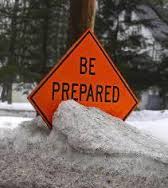Archive for December, 2013
The Shortest Day – Winter Solstice

In ancient times, people were afraid when the days grew shorter and shorter with less and less daylight. As time went by they began to notice that even though the days got shorter there was one day of the year when the sun changed and began to move closer to them again. Tomorrow, December 21st marks the winter solstice, the first day of winter, that moment in time when days grow longer and the nights become shorter. Many cultures have built traditions around the ancient solstice celebrations. Hanukkah, the Festival of Lights and parts of our modern Christmas traditions can all trace their roots back to ancient solstice celebrations.
This is a great marker on the calendar for me because it reminds me that spring is just a few months away. Our winter is still in full swing here on the farm though. The storms keep pounding through our area with no relief in sight. Six inches of rain in just 2 days has fallen. It makes me wonder if I should be building an Ark rather than sitting at the kitchen table laying out plans for my spring garden, buying new hens or ordering catalog seeds and plants.
The girls (hens) are none to happy either. Last week they were prowling around the yard in search of worms and other bugs brought to the surface by the cool damp weather, but for the past few days they’ve been hold up in the barn, not brave enough to venture out into the downpour. My plans to bring in an early batch of meat birds have also succumbed to the weather and will be rescheduled for a later time, when the weather won’t threaten so many losses.
It’s still a magical time, though, despite the weather. One year is put to bed and put behind us while another stretches out before us, pushing above the surface like early spring peas.
The Shortest Day
by Susan Cooper
And so the Shortest Day came and the year died
And everywhere down the centuries of the snow-white world
Came people singing, dancing,
To drive the dark away.
They lighted candles in the winter trees;
They hung their homes with evergreen;
They burned beseeching fires all night long
To keep the year alive.
And when the new year’s sunshine blazed awake
They shouted, revelling.
Through all the frosty ages you can hear them
Echoing behind us – listen!
All the long echoes, sing the same delight,
This Shortest Day,
As promise wakens in the sleeping land:
They carol, feast, give thanks,
And dearly love their friends,
And hope for peace.
And now so do we, here, now,
This year and every year.
Welcome Yule!
Photo Credit: blessed1indeed
Frugal Living: 17 Ways to Cut Holiday Spending
It’s November and many have their eyes set on Christmas; the parties, the outings, the gift giving, the food. With the economy still so uncertain and many still without jobs this season may have the air of being a not so merry holiday.
But, it doesn’t have to be that way. With some careful planning and a few creative “outside-of-the-box” ideas you and your family won’t miss the hectic fast paced rush of previous years. In fact, you may come to treasure a slower paced holiday that allows you to reflect and appreciate the true meaning of the season. Check out our 17 ideas and choose a few to incorporate into your celebration this year, and make it through the holidays without breaking the bank or your spirit. Read the rest of the story »


Recent comments
Aenean nonummy hendrerit mauris. Phasellus porta.